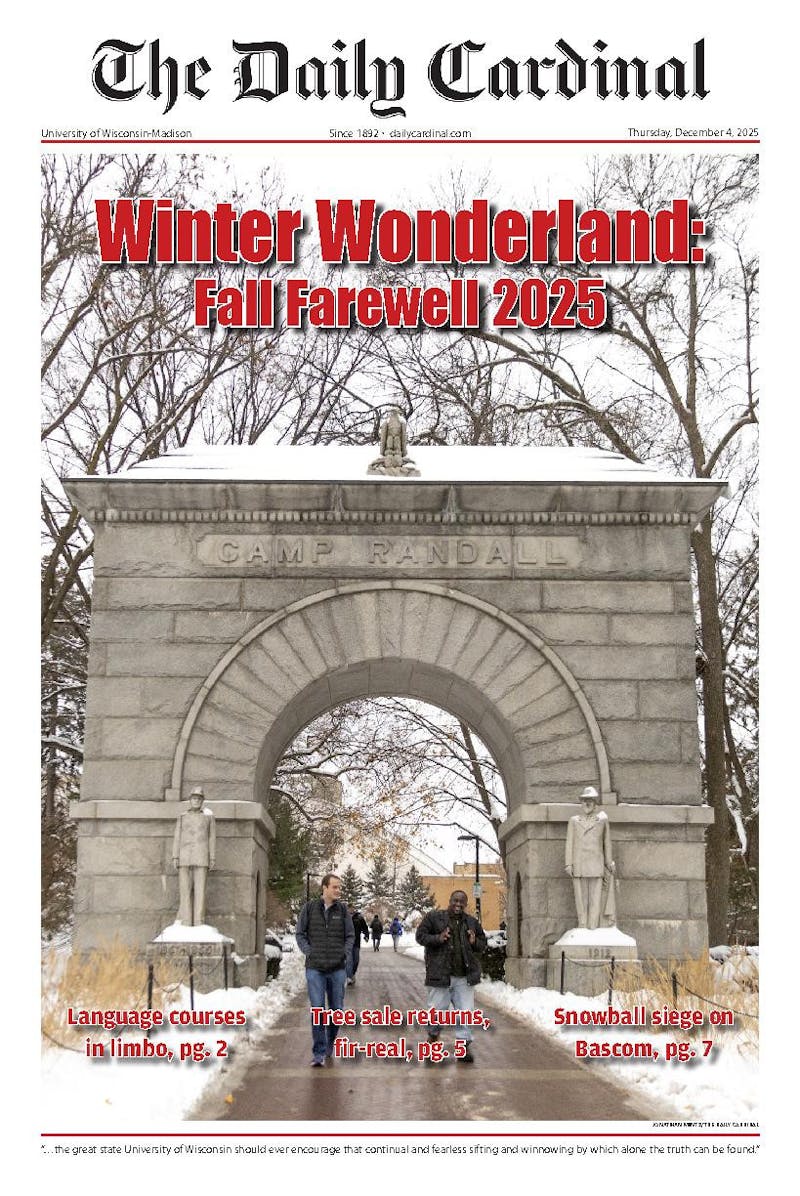Discovery of the spiraling double helix has been integral to the founding of molecular biology. Feb. 28 marked the 50th anniversary of the discovery of the structure of DNA by scientists James D. Watson and Francis Crick. UW-Madison lays claim to many important discoveries stemming from their contribution to science.
Many projects are currently underway at the Biotechnology Center, 425 Henry Mall. James Kaysen of the Center for NanoTechnology describes a DNA synthesis procedure in which a powerful light source, controlled by a computer, is projected through an apparatus containing hundreds of thousands of mirrors. That light promotes very precise DNA synthesis. This new procedure, Maskless Photolithographic Technology, eliminates the weeks of waiting required by older methods of DNA synthesis.
Understanding the basic structure of a strand of DNA is an important building block in molecular biology. In 2000, a 10-year program to map the entire genome of the plant Arabidopsis was completed. This effort encompassed international help, including that of Biotechnology Center Director Michael Sussman. Its short life span, small space requirement and few necessary resources made Arabidopsis perfect for the job. Above all, the plant boasts a very small genome. Once more is known about this plant's genetic composition, researchers can use the results to make improvements in crop species, thereby increasing crop production in this time of an exploding world population and unpredictably fluctuating weather patterns.
Unknown DNA samples could pose a very frustrating problem to professors on campus, but the DNA Synthesis and Sequencing Facility is equipped with technology and staff to decode such mysteries.
\People come to us if they've introduced mutations, if they're faced with particular genes that aren't working as they should, or if they've cloned something and don't know what it is,"" Lab Manager Charles Nicolet said.
Scientists use fluorescent signals from the DNA to sequence genes and compare them to existing databases to see if an unknown sample is similar to known structures. The signals portray the four different DNA bases as different colors. This fluorescent technology replaces previous methods of DNA sequencing that used radioactivity and neurotoxic chemicals.
""The nice thing about DNA is you always know how it's going to behave, regardless of the organism. You can count on it to sequence a certain way, whatever the source,"" Nicolet said. Throughout April, an outreach program known as Science Expeditions will be hosting various educational opportunities across campus, geared to include Madison's surrounding community.
Dr. Thomas Zinnen, of BioTechnology Outreach, explains the principle of the Wisconsin Idea, which focuses on how UW-Madison and its ever-advancing scientific research can reach out to the community.
""[It focuses] on what we have for facilities, and what we therefore have to welcome guests,"" Zinnen said.
Events in April related to science outreach include an International Bioethics Forum and ""Whys and Wows,"" an expo with 20 hands on stations involving physics, chemistry and biology in addition to presentations. For a complete list of events, visit www.science.wisc.edu.





